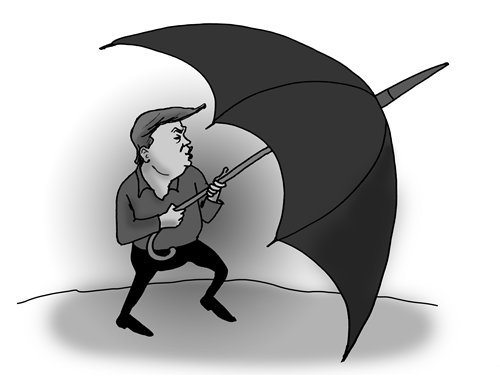Major Power Relations
Your Present Location: PROGRAMS> Major Power RelationsZhangJingwei: US protectionism won’t hold back China’s rise
By Zhang Jingwei Source:Global Times Published: 2018-4-16

The "Development of Emerging Economies Annual Report 2018" released at the Boao Forum for Asia Annual Conference in 2018 shows that from 2009 to 2017, the protectionist measures implemented by the E11 (11 emerging economies in the G20) totaled 3,893, an average of 354 measures from each economy. Yet the protectionist measures implemented by eight developed economies in the G20 group amounted to 3,946, an average of 493, which is 139 measures higher than the former.
The data covers the entire cycle of the global economic crisis, which reflects three facts. First, at the outset of a crisis, economic entities become paralyzed and anxious, and as a standard response to protect domestic interests, they enact protectionist measures. Second, developed economies are more accustomed to manufacturing trade barriers, because they understand more about the rules of international trade and are more familiar with using these rules to resolve trade disputes and maximize their national interests through trade protectionism. Third, the increasing incidence of trade protectionism has hindered the globalization process and blocked the recovery of the global economy.
Trade protectionism is beneficial to certain economies in the short term, but it is detrimental to the global market. Therefore, trade protectionism is a utilitarian manifestation that lacks a global trade perspective, and the 10-year crisis cycle also showed that trade protectionism slowed the process of global economic recovery.
According to the report, from 2009 to 2017, the US implemented 1,378 trade protectionist measures, ranking first in the world, with an average of 153 protectionist measures each year. In 2017, the country with the most new trade protectionist measures in the world was still the US, adding 143 new items.
During his administration, former US President Barack Obama had already begun to implement protectionist measures. This has only become more intense during the current administration of US President Donald Trump. His ambition to "make America great again" has a serious gap with reality, which has created a great sense of anxiety. Trump holds the view that the US has paid too much to the world, and the world owes even more to the US. Thus, in the name of "America first," the door of multilateralism is closed and trade partners are ordered to renegotiate with the US.
China will be the biggest victim if the US implements the most stringent protectionist measures. From the US to Europe and even emerging economies, trade barriers have been frequently applied to China over the past decade. Still, even under the high pressure of trade protectionism, China achieved steady growth.
For 40 years, at constant prices, China`s GDP has grown at an average annual rate of 9.5 percent. In dollar terms, China`s foreign trade volume has grown at an average annual rate of 14.5 percent. Even in the context of supply-side structural reforms, China`s economic growth in recent years has remained at a moderately high rate of over 6.5 percent.
Now the threat of a trade war looms large. Although the two countries are still in a war of words, and nothing has been implemented yet, it has already brought a chill to the global economy that had only just begun to recover.
The stock market is incredibly sensitive, and the US, Asia-Pacific and European stock markets have already reacted negatively. It can be seen that trade protectionism not only affects the US, but also has a negative impact on the market`s vision of the new economic cycle. If the Sino-US trade friction enters a substantive stage, the new economic cycle will once again be enveloped in crisis.
Trade protectionism is the biggest risk to the new economic cycle. Faced with US aggression, China`s position is neutral, unwilling to provoke but not afraid to fight.
The 40-year experience of China`s reform and opening-up shows that the process of China`s growth into the world`s largest trader of goods is a process of constantly overcoming pressure. The US trade friction with China cannot stop China from becoming a manufacturing powerhouse.
Not only is trade protectionism a double-edged sword, it is a game of multiple losses. Whoever shoots the first protectionist bullets will, in the end, suffer the most injuries.
Zhang Jingwei is a visiting fellow of Chongyang Institute for Financial Studies at Renmin University of China.























































































 京公网安备 11010802037854号
京公网安备 11010802037854号





